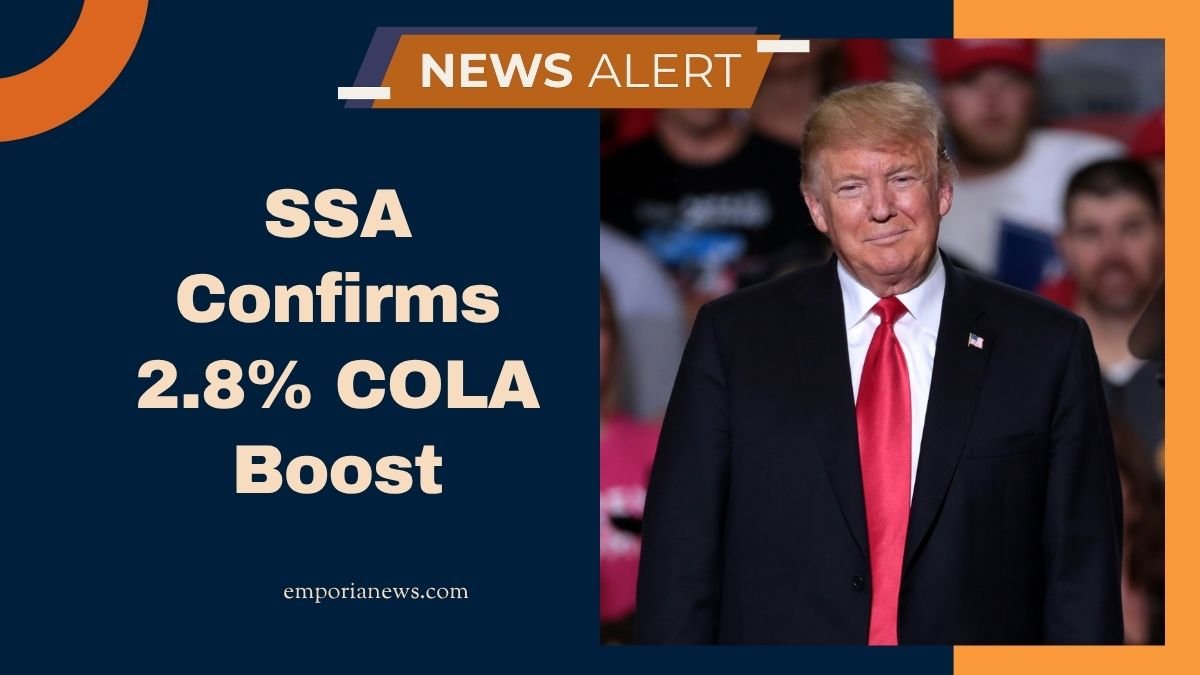For the nearly 7.5 million Americans who receive Supplemental Security Income (SSI), the recently approved 2.8% cost-of-living adjustment (COLA) by the Social Security Administration (SSA) brings a meaningful, if modest, boost to monthly benefits.
The increase takes effect for payments made for January 2026 (and in the case of SSI, the payment is made December 31 2025).
What the 2.8% COLA Means for SSI Recipients
The COLA is meant to help fixed-income programs like SSI keep pace with inflation. With the increase, federal SSI payment amounts are raised by 2.8% across eligible categories. According to SSA data:
| Category of Recipient | 2025 Maximum Monthly Payment | 2026 Projected Monthly Payment (2.8% increase) | Estimated Monthly Increase |
|---|---|---|---|
| Eligible Individual | $967 | $994 | +$27 |
| Eligible Individual + Spouse | $1,450 | $1,491 | +$41 |
| Essential Person* | $484 | $498 | +$14 |
* “Essential person” refers to a person deemed essential and living in the household of an eligible individual when state rules permit.
So, for example, an individual who was receiving the maximum federal SSI amount of $967 in 2025 will see the maximum federal benefit rise to $994 in 2026.
How the Increase Was Calculated & When It Takes Effect
The COLA is determined by measuring inflation via the Consumer Price Index for Urban Wage Earners and Clerical Workers (CPI-W) for the third quarter (July–September) of the current year, compared to the same period the prior year.
In this instance:
- The SSA announced the 2.8% COLA will apply for benefits payable beginning January 1 2026, but for SSI recipients that means the payment made December 31 2025.
- The increase was delayed somewhat because of a federal government shutdown that held up the BLS CPI data release.
The automatic mechanism ensures recipients don’t have to apply for the increase — it’s built into the benefit formula.
Implications & Why It Matters
While a 2.8% increase may seem small, for SSI recipients — many of whom rely heavily on these benefits to cover basic needs such as food, shelter, and clothing — it can make a real difference. Some key implications:
- The increase helps maintain purchasing power given inflation but may still fall short of actual cost rises in areas like housing and healthcare.
- Recipients must still meet eligibility requirements: limited income and resources, and being aged 65 or older, blind or disabled.
- Some states provide supplemental payments on top of the federal SSI payment; the federal COLA increase also applies to the federal base amount, which then can affect the supplemental state amount.
- The timing means SSI beneficiaries will see the increased amount in the December 31 2025 payment (for January 2026).
The SSA’s approval of a 2.8% COLA for 2026 marks a positive increase for SSI recipients, offering a modest boost to monthly income at a time of increasing living costs.
With new maximum federal payment levels rising to $994 for individuals, $1,491 for eligible couples, and $498 for essential persons, the increase provides meaningful relief.
However, given rising costs in key areas, recipients should view this increase as supportive but not a full solution. Staying informed about eligibility, timing, and any state-level supplements will help maximize benefits. For many, this raise may ease some financial pressure — but budgeting and planning remain essential.




